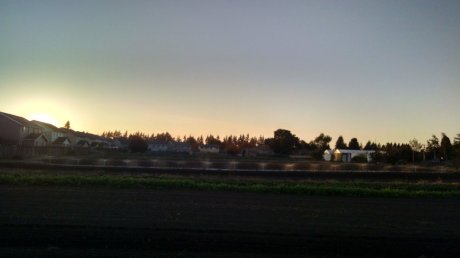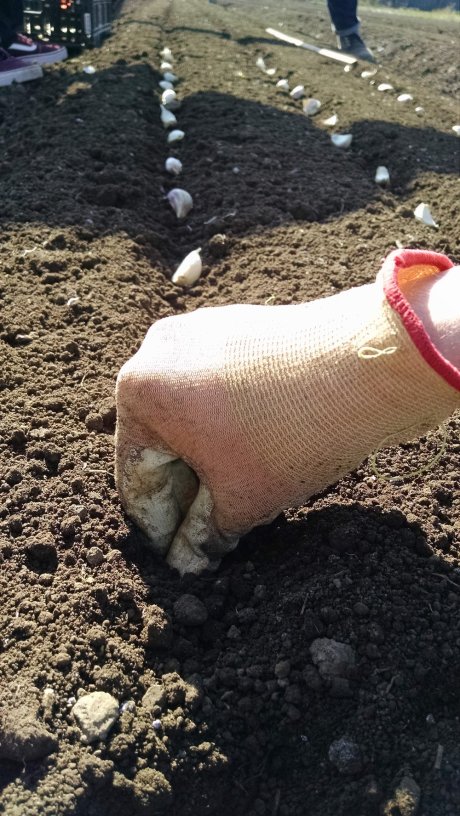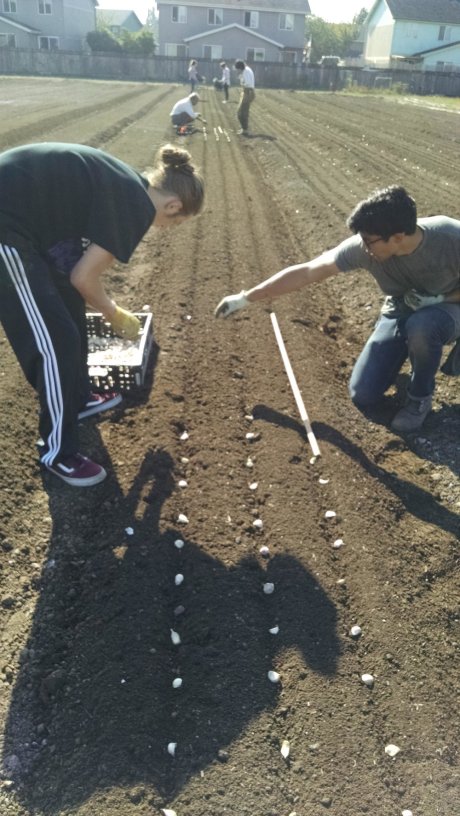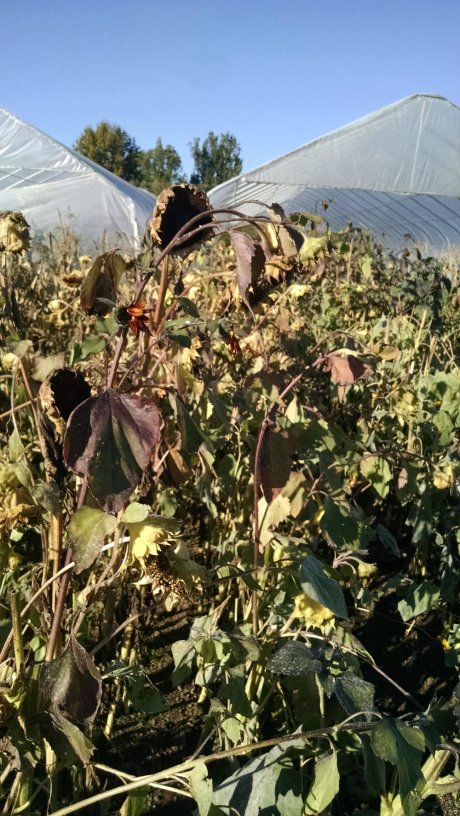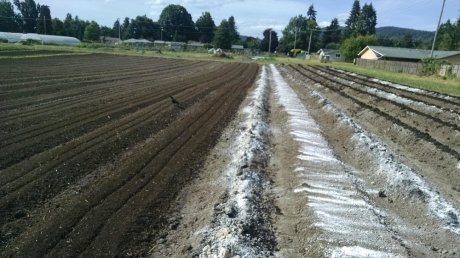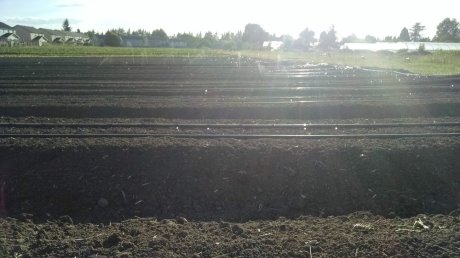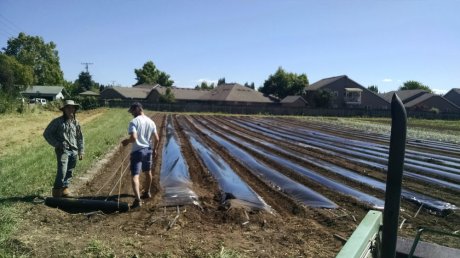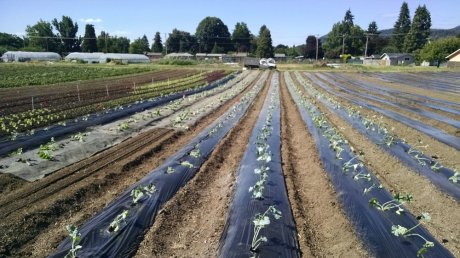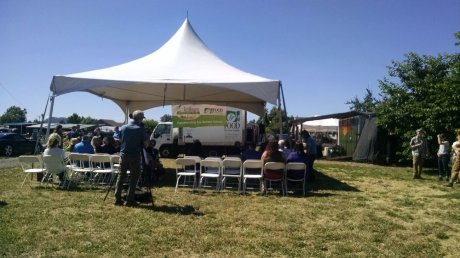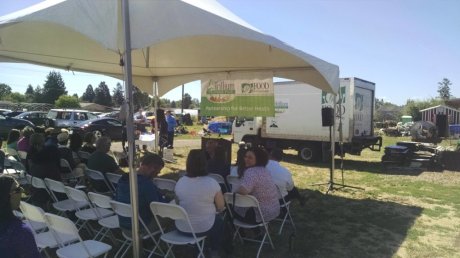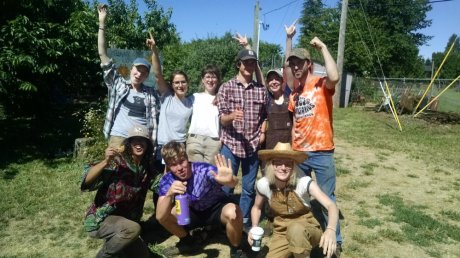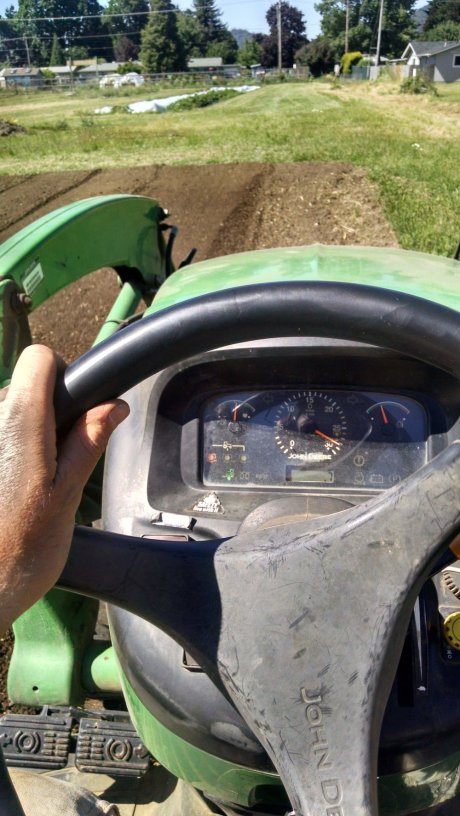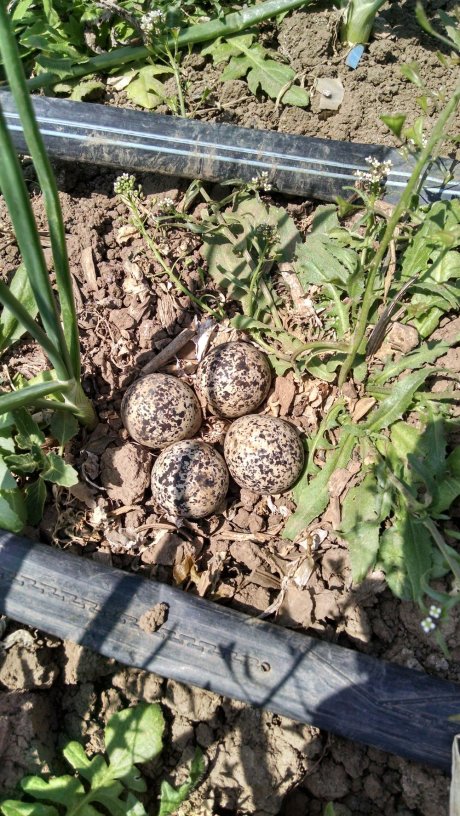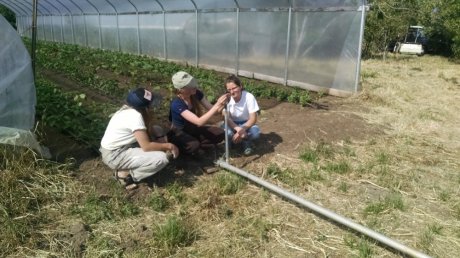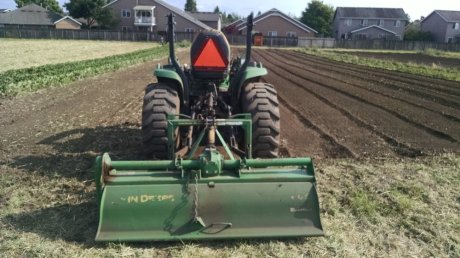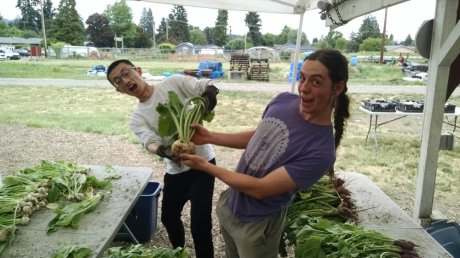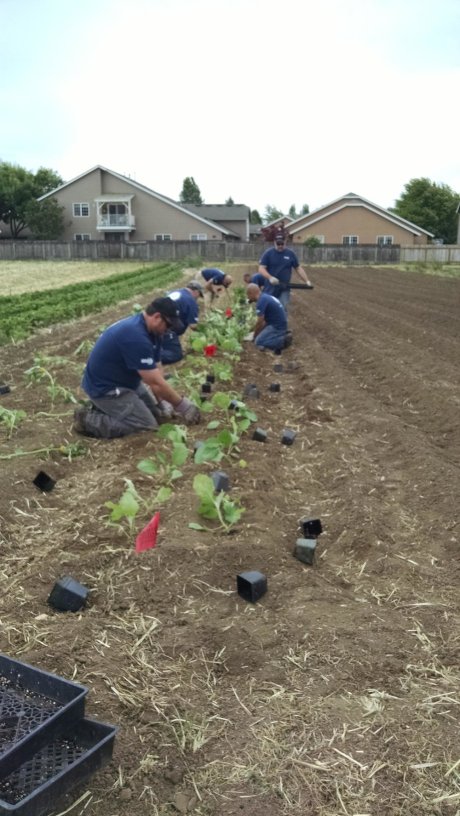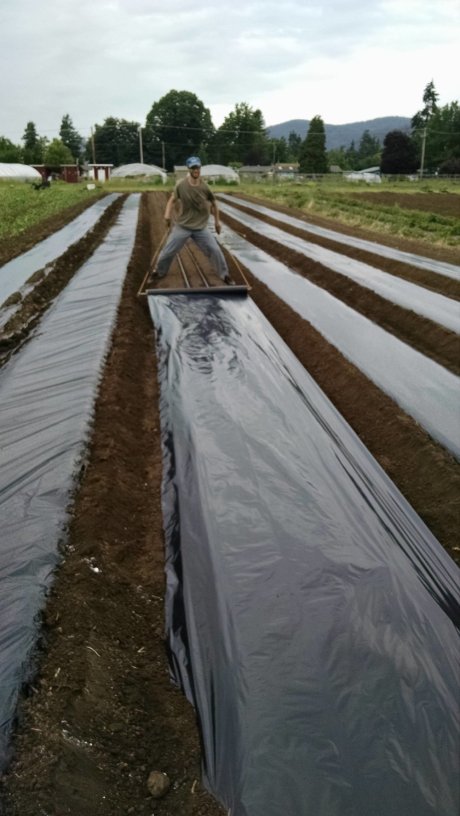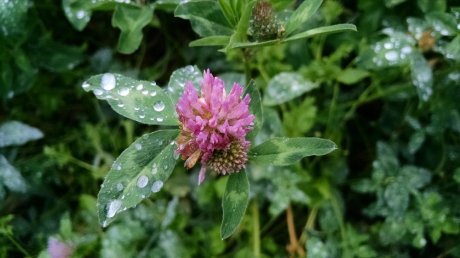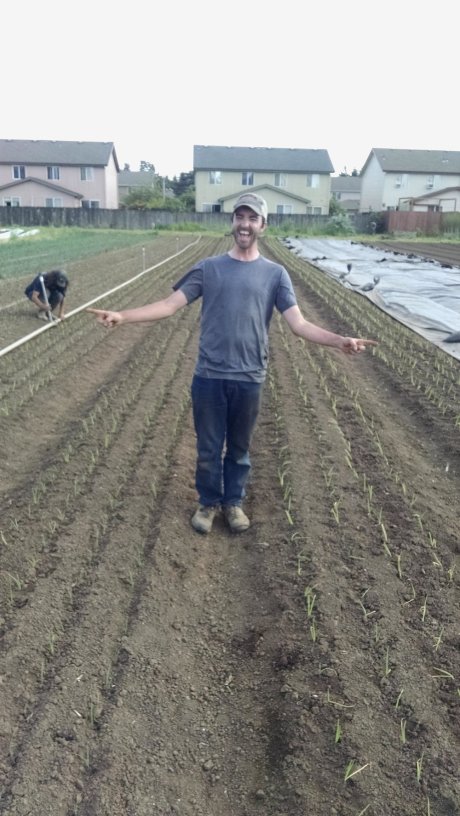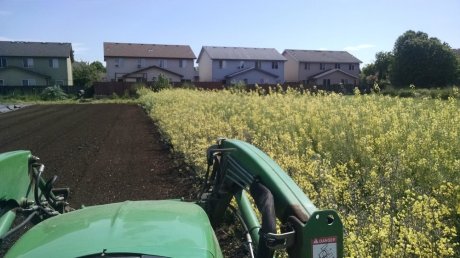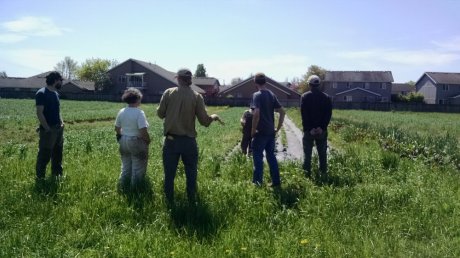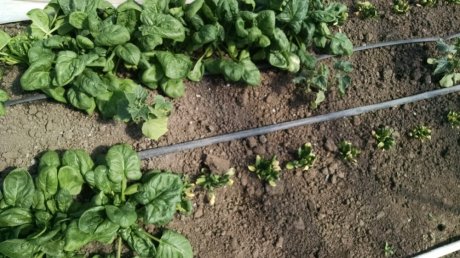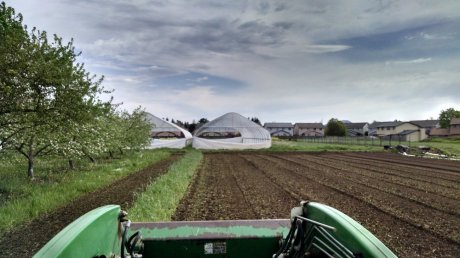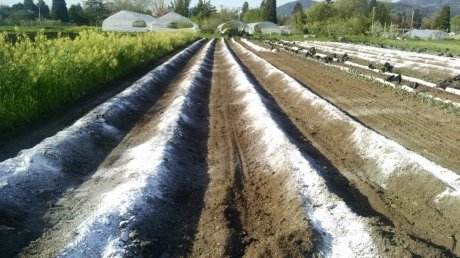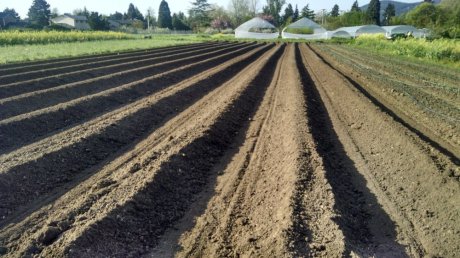I’m still blown away by what all can happen on the farm in a week. Rains in the forecast. Blissfully sunny days. An unexpected frost over the weekend. A few sizable volunteer groups. We push, and rearrange projects, and let harvest fall off while we focus on the fields. We woefully sort all the peppers that got zapped by the light freeze, take turns on the tractor to turn in the blackened plants, water the last bits of parched soil to get the moisture right for tilling. We spread manure, chicken pellets, fish meal, or lime over neat mounds or entire sections of flat fields, till it all in, and have to remind ourselves that it’s fall— that these delightfully neat beds ready for planting are not the first of the season, but rather the very last.
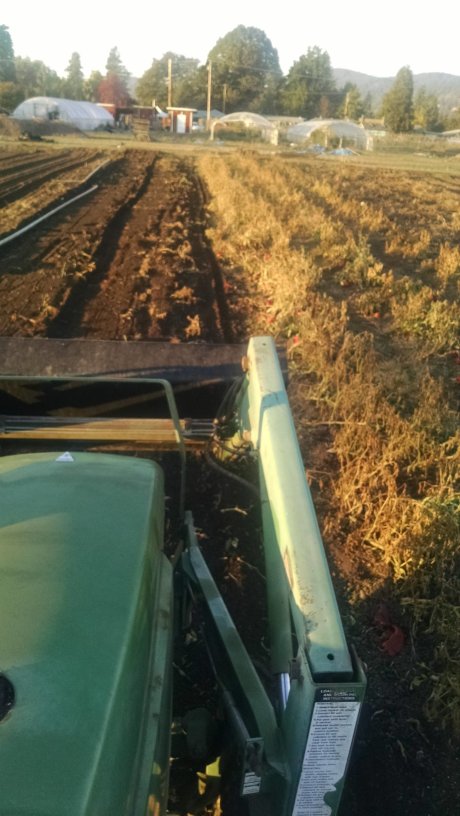
Tilling under frost-bitten pepper plants
We plant garlic. The volunteer group on Thursday starts cracking heads into cloves while Sophie sorts out the bulbs we’ll sell over the next month. The group on Friday finishes cracking them all, and in the afternoon I sort out the small cloves— the ones that’ll make leggy plants and mini heads next summer— with the youth farmers. We’re left with six crates of fat cloves, three of each variety we grow (Youth Farm, a mix of everything over the years, and Nootka Rose, a bulky reddish softneck). And on Saturday, the crew starts laying out straight lines of cloves in those newly shaped beds, three rows per bed, six inches apart in the row. The morning volunteer group of environmental studies students pokes them into the ground, alarmingly fast it turns out, and it’s all planted before we know it. With so many extra cloves, we even plant an eighth bed. And that days-long project is done in a couple hours, garlic now just waiting for rain.
#block-yui_3_17_2_1_1540224147244_33444 .sqs-gallery-block-grid .sqs-gallery-design-grid { margin-right: -7px; }
#block-yui_3_17_2_1_1540224147244_33444 .sqs-gallery-block-grid .sqs-gallery-design-grid-slide .margin-wrapper { margin-right: 7px; margin-bottom: 7px; }
We convert every corner of the farm to cover crop. Ted comes in Friday as purely “tractor operator” to till under old crops, prepare all the greenhouse and outdoor beds that are ready to plant, and spread cover crop like crazy. I’m on the tractor after he leaves Thursday, Friday, and Saturday, keeping it running, racing the rains just like we do in spring. Once a significant rainfall occurs, we won’t be able to drive in the fields anymore, and it’s game over. So we race, every day until sunset, stretching into that final frontier of old infested winter squash. Remember when I wrote about the push to plant that section of the farm back in June? Well, it happened again this week: all the rest of the farm was tilled under, planted in cover crop, ready for winter, and there I was on the tractor, back and forth, back and forth, into and out of the shadows of the houses, the still-warm rays of sun only partially counteracting an evening chill raising the hairs on my arms, looking out to the west over a farm ready for cold wetness, undoing all our doing and giving it a new beginning for the darkest days of the year.
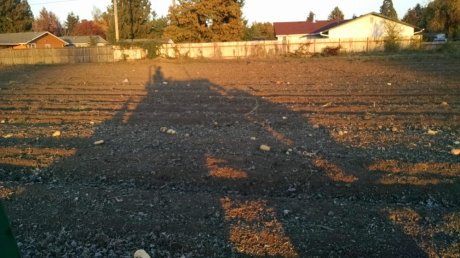
Tilling under the final frontier of winter squash beds
I finish tilling under the last of the squash beds after five o’clock on Saturday evening. The sound of the seed spreader rattles in from my arms as I walk briskly across the field, spinning the crank, watching for an even spray of rye, vetch, and field pea seeds flinging out from my center. The bag runs out a couple times, and I return to the totes in the tractor bucket to refill. The sun dips lower, the light turns everything orange, and finally I get to fly.
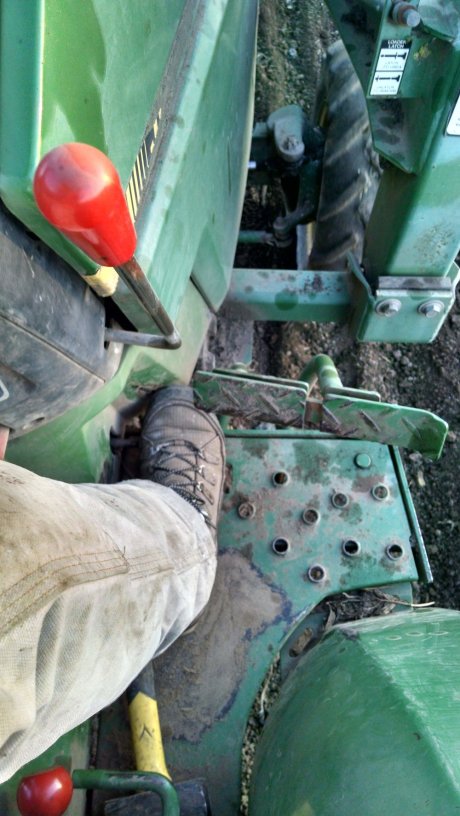
Pedal to the metal!
The tractor speeds under me. I’m going fast enough to swerve when I peek behind me to make sure the tines aren’t digging in too deep. Seed should be just covered, not buried deep. I get the hang of it after a few passes, drop the handle to a set number to keep it consistent each time, spin myself around at the edge of the field, over and over. The sunshine isn’t warm enough to feel anymore, and the coolness of evening races over my goosebumps as I step on the gas. The cold feels right now.
We’re ready.
